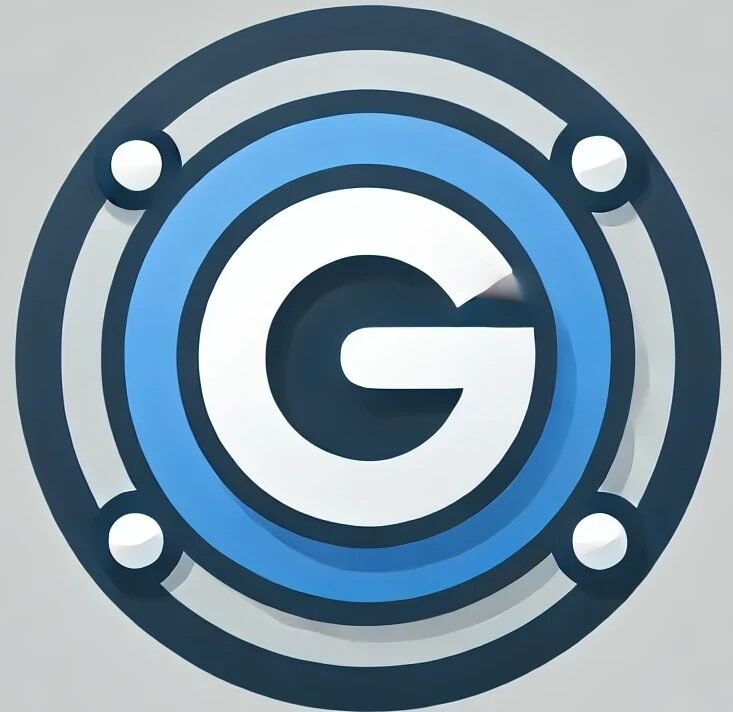Written by: Segun Akomolafe
AI tools like ChatGPT are revolutionizing how marketers approach strategy development, content creation, and customer engagement. This powerful language model can serve as your marketing co-pilot, helping you work smarter and deliver more impactful results. Here’s a comprehensive guide on how to utilize ChatGPT for marketing strategy.
Understanding ChatGPT’s Marketing Potential
ChatGPT isn’t just a chatbot, it’s a versatile marketing assistant that can analyze data, generate ideas, and create content. Before diving into specific applications on how to utilize ChatGPT for marketing strategy, understand that ChatGPT works best when you provide clear context, specific instructions, and examples.
It excels at tasks requiring language processing but needs your expertise and oversight to ensure outputs align with your brand voice and strategic goals.

Market Research and Competitive Analysis
ChatGPT can help you gather insights about your market and competitors without spending hours on research. Ask it to analyze industry trends, identify market gaps, or outline competitive positioning strategies based on information you provide.
For competitive analysis, try prompts like: “Analyze these three competitors in the fitness app market and identify their unique selling propositions, content strategies, and potential weaknesses.” Follow up with specific questions to drill deeper into areas of interest.
The key advantage here is speed—ChatGPT can quickly organize information and identify patterns that might take you significant time to uncover manually. However, always verify critical insights with primary research.
Audience Persona Development
Developing a detailed audience is essential for targeted marketing, but it can be time-consuming. ChatGPT can help you flesh out personas based on demographic data, behavioral patterns, and pain points you’ve observed.
Start with basic information about your target audience, then ask ChatGPT to expand on potential motivations, objections, and content preferences.
For example: “Based on this demographic information about our small business owner audience, help me develop a comprehensive buyer persona including their likely challenges, information sources, and decision-making factors.”
Use ChatGPT’s outputs as a starting point, then refine personas based on actual customer data and feedback.
Content Strategy Development
Content strategy requires both creative thinking and analytical planning. ChatGPT can assist with both aspects, helping you develop a coherent approach aligned with your marketing objectives. Here are some valid points on how to utilize ChatGPT for marketing strategy.
Ask ChatGPT to:
- Suggest content themes and topics for different stages of the buyer journey
- Recommend content formats for specific audience segments
- Create editorial calendars based on seasonal trends
- Identify potential SEO opportunities in your niche
- Develop content distribution strategies across different channels
The most effective approach is to present ChatGPT with your marketing goals, audience information, and any constraints, then request strategic recommendations.
For example: “Our goal is to increase organic traffic by 25% in the next quarter for our accounting software. Our primary audience is small business owners. Help me develop a content strategy focused on answering their tax-related questions.”
Content Creation and Optimization
Content creation is where ChatGPT truly shines for marketers. You can use it to:
Blog Posts and Articles
When creating blog content, provide ChatGPT with a clear outline, target keywords, and tone guidelines. For example: “Write an introduction for a blog post titled ‘Sustainable Supply Chain Management‘ targeting procurement directors.
The tone should be authoritative but conversational, and include these keywords naturally: sustainable sourcing, ethical procurement, and supply chain transparency.”
For best results, use ChatGPT to generate drafts, then personalize them with your own insights, examples, and brand voice.
Social Media Content
ChatGPT can help you maintain a consistent social media presence by generating varied post ideas for different platforms. Request platform-specific content by specifying character counts, hashtag requirements, and engagement goals.
For example: “Create 5 LinkedIn post ideas (under 1,300 characters each) about artificial intelligence in healthcare that would encourage discussion among medical professionals.”
Email Marketing Sequences
Developing email sequences requires careful attention to messaging flow and persuasive techniques. ChatGPT can help you draft entire sequences, from welcome emails to nurture campaigns.
Provide information about your audience segment, their pain points, your solution, and desired actions. Then ask ChatGPT to create a sequence with appropriate subject lines, body content, and calls-to-action.
Landing Page and Ad Copy
Effective landing pages and advertisements require concise, compelling copy that drives conversions. Use ChatGPT to generate multiple variations of headlines, value propositions, feature descriptions, and CTAs.
For example: “Write 5 headline variations for a landing page promoting a virtual fitness coaching program, emphasizing convenience and personalization for busy professionals.”
SEO Enhancement
This section covers how to utilize ChatGPT for marketing strategy with SEO enhancement. Actually, ChatGPT can bolster your SEO efforts in several ways:
Keyword Research and Organization
While ChatGPT isn’t a replacement for dedicated keyword research tools, it can help you organize and expand keyword lists. Ask it to categorize keywords by search intent, suggest related terms, or brainstorm long-tail variations.
Meta Descriptions and Title Tags
Writing compelling meta descriptions and title tags that include keywords while remaining engaging is challenging. ChatGPT can generate multiple options that balance SEO requirements with click-worthiness.
Request variations like: “Create 3 SEO-friendly meta descriptions under 155 characters for an article about sustainable home renovation, including the keyword ‘eco-friendly building materials.'”
Content Optimization Suggestions
If you’re updating existing content, share the current version with ChatGPT and ask for optimization recommendations. It can suggest ways to improve keyword usage, readability, structure, and comprehensiveness.
Customer Journey Mapping
Understanding the customer journey is critical for effective marketing. ChatGPT can help you map touchpoints and identify opportunities to improve the customer experience.
Share information about your typical customer’s path to purchase, then ask ChatGPT to help identify:
- Potential pain points at each stage
- Content needs throughout the journey
- Opportunities for personalization
- Automation possibilities for common interactions
For example: “Based on this information about how our B2B software customers typically move from awareness to purchase, help me identify potential friction points and content opportunities at each stage.”
Marketing Analytics Interpretation
While ChatGPT can’t access your analytics platforms directly, it can help interpret data you share and suggest actionable next steps.
Share key metrics from your campaigns and ask for insights: “Based on these email marketing statistics (20% open rate, 2.5% click-through rate, 0.5% conversion rate), what might be happening and how could we improve performance?”
ChatGPT can also help you develop reporting frameworks and data visualization plans that communicate marketing impact effectively to stakeholders.
Campaign Planning and Execution
Developing integrated marketing campaigns requires orchestrating multiple elements. ChatGPT can help you:
Campaign Concept Development
Provide ChatGPT with your campaign objectives, target audience, and key messaging points, then ask for creative campaign concepts. For example: “Our summer campaign needs to promote our sustainable clothing line to environmentally conscious millennials. Suggest three campaign concepts that could work across social media, email, and our website.”
Campaign Messaging Framework
Once you’ve selected a campaign concept, ChatGPT can help develop consistent messaging across channels. Ask it to create a messaging framework including key themes, headlines, supporting points, and CTAs tailored to different platforms and formats.
Campaign Timeline and Task Lists
ChatGPT can help you plan campaign execution by generating detailed timelines and task lists. Provide your launch date and available resources, then request a working backward plan with key milestones and responsibilities.
Strategic Communications
Beyond tactical marketing, ChatGPT can assist with strategic communications:
Crisis Communication Planning
Ask ChatGPT to help develop response templates for potential crisis scenarios in your industry. For example: “Help me create a crisis communication framework for our food delivery app in case of a data breach, including initial statements, follow-up messaging, and stakeholder-specific communications.”
Brand Messaging Refinement
If you’re refining your brand messaging, ChatGPT can help synthesize positioning statements, value propositions, and brand voice guidelines. Share information about your brand identity, customer research, and competitive landscape, then request focused messaging elements.
Implementing ChatGPT in Your Marketing Workflow
To effectively integrate ChatGPT into your marketing operations:
Start with Clear Prompting Practices
Develop internal guidelines for how your team should prompt ChatGPT for best results. Include examples of effective prompts for different marketing tasks and templates for common requests.
Establish Quality Control Processes
Create a review process for ChatGPT outputs to ensure accuracy, brand alignment, and strategic fit. Consider implementing a tiered approach where lower-risk applications require less oversight than customer-facing or strategy-critical content.
Track and Measure Impact
Monitor how ChatGPT affects your marketing efficiency and effectiveness. Track time saved, output quality, and resulting marketing performance to demonstrate ROI and identify improvement opportunities.
Read more: The 4 Best AI Apps for Marketers

Looking Forward
As AI tools like ChatGPT continue to evolve, they’ll become increasingly central to marketing operations. Here are the final thoughts on how to utilize ChatGPT for marketing strategy.
Stay ahead by:
- Regularly testing new capabilities as the technology advances
- Developing AI-specific skills within your marketing team
- Balancing automation with human creativity and strategic thinking
- Creating ethical guidelines for AI use in marketing
The marketers who thrive will be those who view ChatGPT not as a replacement for human expertise but as a powerful multiplier that enhances creativity, accelerates execution, and enables more personalized customer experiences.
By thoughtfully incorporating ChatGPT into your marketing strategy toolkit, you can gain a significant competitive advantage—working smarter, producing more consistent results, and freeing up valuable time to focus on the strategic thinking and creative innovation that truly differentiates your brand.
Related Contents
